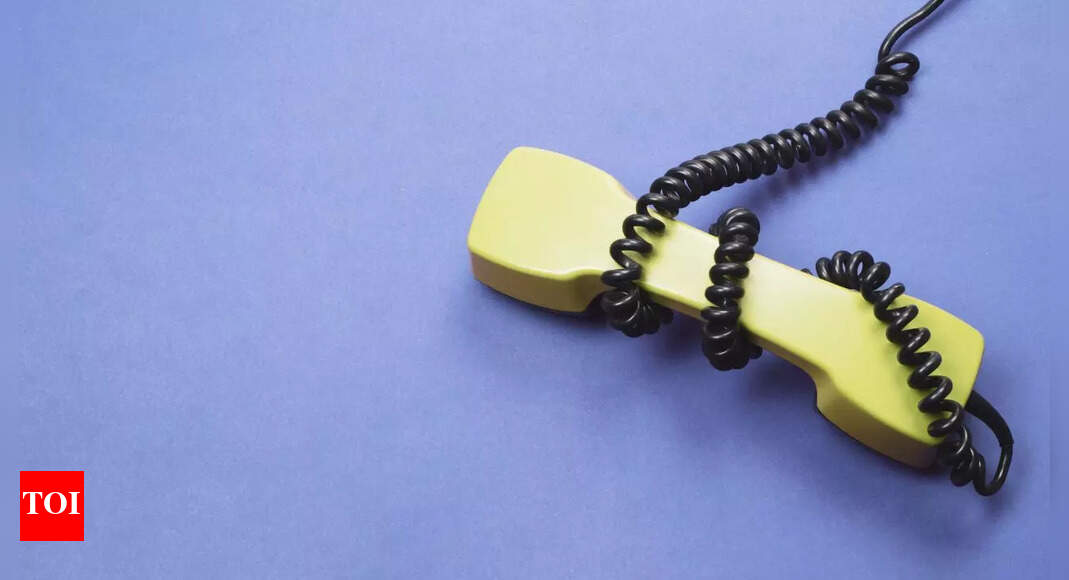 In a world where smartphones have become a part of daily life, the simple act of answering a phone call is causing anxiety for many. This condition, called telephobia, is marked by fear or discomfort when making or receiving phone calls. It is increasingly being recognised as a real mental health concern, especially among young adults and students. The issue goes beyond shyness or preference for texting. It reflects deeper psychological stress linked to constant digital exposure and social pressure. As online communication replaces real conversations, experts are starting to explore how this shift affects mental wellbeing and social interaction in subtle but serious ways.
In a world where smartphones have become a part of daily life, the simple act of answering a phone call is causing anxiety for many. This condition, called telephobia, is marked by fear or discomfort when making or receiving phone calls. It is increasingly being recognised as a real mental health concern, especially among young adults and students. The issue goes beyond shyness or preference for texting. It reflects deeper psychological stress linked to constant digital exposure and social pressure. As online communication replaces real conversations, experts are starting to explore how this shift affects mental wellbeing and social interaction in subtle but serious ways.
Understanding telephobia and its rise among young adults
The term “telephobia” was first introduced in 1992 to describe fear or anxiety related to phone calls. It is now recognised as a form of social phobia, sharing traits with conditions such as glossophobia (fear of public speaking) and agoraphobia (fear of open spaces). People with telephobia may avoid phone calls altogether, feel panic when hearing their ringtone, or rely entirely on text messages to communicate.A study published in the Journal of Family Medicine and Primary Care explored this issue in detail, focusing on medical students in India. The researchers found that 42% of students showed some level of telephobia, while 9% had symptoms serious enough to affect daily life. The study also noted that males were more likely to experience moderate-to-severe telephobia compared to females.Telephobia often exists alongside other modern digital anxieties such as phantom vibration syndrome (the feeling of a phone ringing when it isn’t) and nomophobia (the fear of being without one’s phone). Together, these patterns highlight how technology, while connecting people, is also reshaping human emotions and social habits.
The causes and behavioural patterns linked to telephobia
According to the research, several factors contribute to the rise of telephobia. Prolonged internet use was found to have a strong link to the condition. Students who spent more time online were more likely to show higher levels of phone-related anxiety. Urban students were also more affected than those from rural backgrounds, possibly due to heavier digital use and greater social isolation.Another striking finding was the association between telephobia and certain online behaviours, including exposure to pornography. Among male participants who reported consuming such content, telephobia levels were significantly higher. Researchers believe this may be tied to avoidance of real social or emotional interaction, leading to discomfort in direct communication.Overall, telephobia appears to be part of a broader pattern of digital stress. Continuous screen time, fear of judgement, and dependency on messaging platforms create a comfort zone where people feel safe but detached. Over time, this avoidance of real-time verbal communication may deepen social anxiety and reduce confidence in interpersonal interactions.
How telephobia affects mental health and professional life
While telephobia might seem like a small or modern problem, its effects can be serious. It can reduce a person’s ability to build relationships, perform well in social settings, or handle communication-based tasks. For medical students and healthcare professionals, the consequences are especially concerning. In their future roles, phone calls are often vital for patient care, emergencies, and teamwork.The research points out that anxiety over answering calls may interfere with professional responsibilities. Cases have been reported where healthcare workers avoided urgent calls because of panic or fear. This behaviour not only affects efficiency but can also have safety implications in medical settings.The study also connects telephobia with broader mental health issues such as depression, attention deficit disorders, and substance use. It shows how emotional strain, academic pressure, and digital addiction together form a cycle that makes it difficult for young people to manage communication stress. This growing problem reflects how constant connectivity can sometimes lead to emotional exhaustion instead of comfort.
Steps to manage and reduce phone-related anxiety
The study recommends a balanced approach to tackle telephobia, combining awareness, education, and therapy. Encouraging face-to-face communication can help rebuild comfort with verbal interaction. Universities and workplaces can play a role by promoting open discussions about digital anxiety and mental health.Simple habits like setting screen time limits, turning off unnecessary notifications, and practising mindful phone use can make a difference. For individuals with severe symptoms, professional counselling, especially cognitive behavioural therapy (CBT), can be effective. CBT helps identify negative thought patterns and replace them with healthier coping mechanisms.The authors also suggest adding “digital hygiene” modules to educational curriculums. These would teach students how to use technology responsibly, balance online and offline life, and recognise early signs of digital burnout. Building awareness of such patterns early on can prevent long-term psychological issues.Telephobia reflects a growing tension between constant digital availability and the basic human need for genuine connection. What was once a tool for communication has, for many, become a source of stress and avoidance. The research on Indian medical students highlights that even among young, tech-savvy populations, the fear of phone calls is rising.This anxiety is not about the device itself but about the pressures attached to it, the fear of being judged, misunderstood, or overwhelmed. Recognising telephobia as a real and treatable concern is the first step. As our dependence on digital tools continues to grow, finding healthier ways to manage them will be crucial. Restoring comfort with human conversation, both online and offline, may be one of the most important mental health goals of our time.Disclaimer: This article is for informational purposes only and should not be considered medical advice. Please consult a healthcare professional before making any changes to your diet, medication, or lifestyle.Also Read | Your phone posture could be making you sad, tired, and stressed; here’s why

